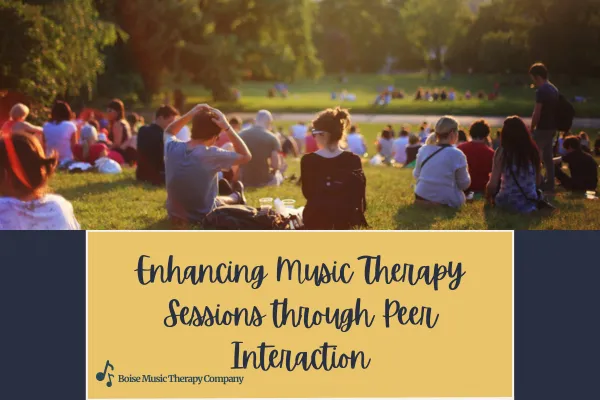Harmony in
Neurodiversity
THE BLOG
Welcome to Harmony in Neurodiversity, a blog dedicated to exploring the profound impact of music and positive parenting strategies on the lives of neurodivergent individuals. Join Samantha, a board-certified Neurologic Music Therapy fellow and a passionate Positive Discipline Parent Educator, as she shares her expertise in leveraging the power of music and effective parenting approaches to support and empower neurodiverse communities.
In her blog posts, Samantha delves into the intricate connections between music and the brain. She explores how specific musical elements and interventions can enhance cognitive functions, regulate emotions, improve communication, and promote social interaction among neurodivergent individuals. Through insightful articles and case studies, she demonstrates how rhythm, melody, and lyrics can serve as powerful tools for therapeutic interventions, fostering growth and self-expression.
Positive Discipline Parenting Strategies:
Drawing from her expertise as a Positive Discipline Parent Educator, Samantha sheds light on nurturing positive relationships between parents and neurodivergent children. Her blog offers practical advice, evidence-based strategies, and real-life anecdotes that empower parents and caregivers to cultivate respectful, encouraging, and effective parenting techniques. From setting clear boundaries to fostering a supportive environment, Samantha guides readers in navigating the challenges and joys of parenting neurodiverse children.
Exploring Intersectionality:
Samantha doesn't limit her discussions to singular approaches. Instead, she delves into the intersectionality of Neurologic Music Therapy and Positive Discipline Parenting, illustrating how these methodologies complement each other. Through her insightful content, she showcases how the harmonious integration of music-based interventions and positive parenting strategies can create holistic support systems for neurodivergent individuals, promoting their well-being and personal growth.
Community Engagement and Resources:
Additionally, Samantha fosters a vibrant online community where readers can engage, share experiences, and seek advice. She curates a wealth of resources, including recommended readings, workshops, and practical tools, empowering her audience to implement valuable insights into their lives effectively.

Enhancing Music Therapy Sessions through Peer Interaction
Enhancing Music Therapy Sessions through Peer Interaction
Music therapy is a powerful medium that aids in emotional, psychological, and physical healing. However, beyond the melodies and rhythms, the presence of peer interaction within music therapy sessions significantly amplifies its impact. Exploring the significance of peer interaction in music therapy sessions unveils a realm where shared experiences, communication, and connection intertwine to foster healing and personal growth.
Why Peer Interaction Matters in Music Therapy:
1. Social Connection and Support: Peer interaction creates a space where individuals feel supported, understood, and accepted. In music therapy, this connection is amplified through shared musical experiences, facilitating empathy and building a sense of community among participants.
2. Communication and Expression: Engaging with peers encourages communication and expression in non-speaking ways. Music provides a channel for individuals who may struggle with verbal communication to express their emotions, thoughts, and experiences, fostering a deeper understanding and connection with others.
3. Building Trust and Collaboration: Collaborative music-making in group settings cultivate trust among participants. The act of creating music together promotes teamwork, cooperation, and the development of mutual respect, crucial elements that extend beyond the therapy room into daily life.
4. Emotional Resonance and Validation: Sharing musical experiences with peers allows individuals to feel validated in their emotions. Music uniquely evokes and reflects emotions, enabling participants to feel understood and acknowledged by others in the group.
5. Skill Development and Learning: Peer interaction in music therapy encourages learning from one another. Whether learning new musical skills or gaining insights from others' experiences, the group dynamic facilitates a conducive environment for personal growth and skill development.
Strategies to Encourage Peer Interaction in Music Therapy Sessions:
1. Group Improvisation and Jam Sessions: Encourage participants to engage in group improvisation or jam sessions, allowing them to contribute their musical ideas collaboratively.
2. Partner or Small Group Activities: Create opportunities for smaller groups or pairs to work together on musical exercises or compositions, fostering intimate connections and mutual support.
3. Reflective Discussions: Incorporate discussions after musical activities, allowing participants to share their experiences, emotions, and insights. This facilitates deeper connections and understanding within the group.
4. Peer-Led Sessions: Occasionally, let participants guide musical activities or discussions, empowering them to share their expertise and perspectives with the group.
By fostering social connections, encouraging communication, and validating emotions, peer interaction within music therapy sessions elevates the therapeutic experience, making it a powerful catalyst for positive change in individuals' lives. Embracing this aspect enriches the healing journey, creating harmonies that resonate far beyond the confines of the therapy room.


